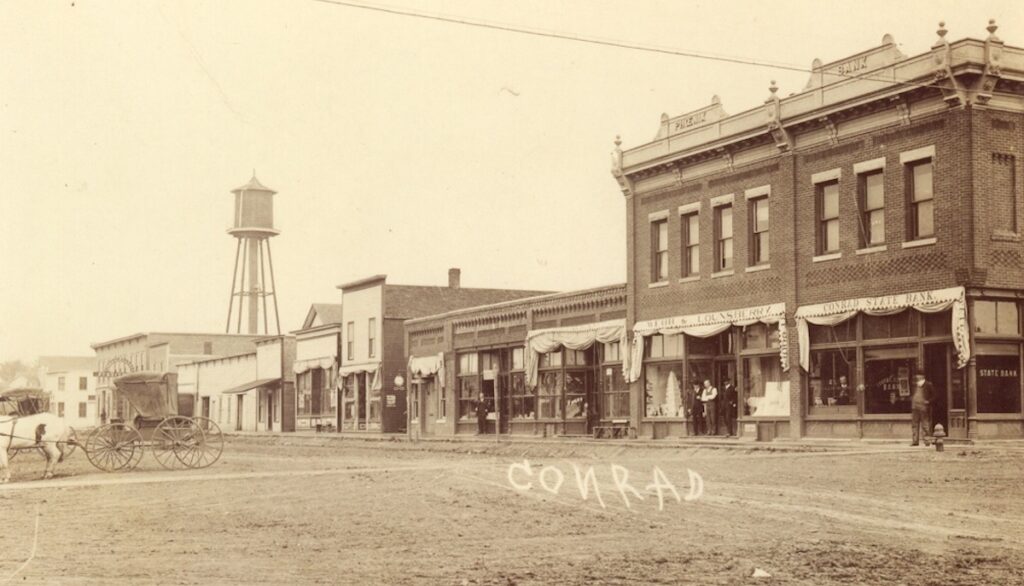Imagine yourself landing in a little area of the country in 1853 that was soon to become the little town of Conrad, Iowa and the first thing of note was the rich, fertile black soil that would ultimately become the town’s claim to fame.
Think any one of those early settlers could have seen that coming? Here is how it all came to be.
What’s So Great About Iowa Soil?
J. W. Conrad and a hearty band of travelers landed in an area filled with very little to see but vast grasslands. Even though that was literally all there was as far as the eye could see, it seemed to have occurred to the travelers that the land’s lush grassy appearance had to be a product of excellent soil, which could serve them well if this was indeed where home was to become.
Simply put, many, many years – thousands, most likely – of soil that was layered with poor drainage and minerals that were a product of prairie dust storms created very rich, very dark black soil. This literal magical clay mixture proved to be Conrad’s version of finding gold, as whatever was planted for their very survival as they set up their town thrived beyond their wildest dreams.
Corn, wheat, and oats all became rich and plentiful. Not to mention an enormous burden was now removed from the settlers, who didn’t have to worry about providing for their families while settling in a brand-new part of the country (and in what has now become a time-honored Iowa tradition, children likely helped pitch in on the back-breaking labor that it took to cultivate that rich soil).
Conrad still celebrates its origins with a Black Dirt Days festival held every summer (held in early June this year). The event includes a parade large enough that people line up 30-60 minutes prior to get a great view, tractor pulls, pony rides, and much more. If Iowa’s pigs – which outnumber humans in the state – could ever figure out how to harness the soil for their own revolution, it could be over.
This year’s Black Dirt Festival may be over, but it’s never too early to mark your calendar for a visit next year, as I’m sure the hotels book early!
And while it may seem a bit weird that people of this little Iowa town to this day seem to worship their amazing soil, history is full of stories of civilizations worshipping and truly being grateful for what the land provides to ensure one’s survival.
Soil Worship Around the World
One soil worship origin can actually be traced all the way back to the 1400s in Beijing, China. The Sheji tan altar built in 1421 is a complex with yellow, red, green, black, and white earth that represent the five elements and the soil types throughout China.
But perhaps the weirdest part of our tale is the fact that despite what soil does for us to survive as far as eating, cultures through the years also used dirt as medicine, and that practice still exists today in Africa. Pregnant women ingest dirt for both nutrition and to ease morning sickness. High in Potassium, zinc, copper, magnesium, and iron, it is a sort of wonder drug and diet supplement all at the same time.
